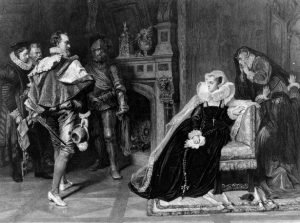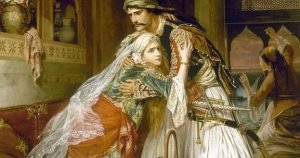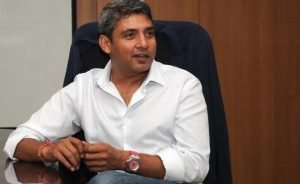This Day in History is DUE’s daily dose of trivia for all the history buffs out there. So sit back and take a ride of all the fascinating things that happened today!
People are trapped in history and history is trapped in people, and hence, every day has been a significant one in the foibles of history. Now, let’s take a tour of “This Day in History – 1st February”.
1587
In October 1586, Mary, Queen of Scots was tried for her involvement in the Babington Plot. It was a plot constructed to assassinate Queen Elizabeth I. Mary demanded to be heard in front of the Parliament or the Queen when the trial closed. However, she was just fighting a losing battle.
On Elizabeth’s order, the sentence was delayed. But on October 25th the commission reconvened and found Mary guilty. Four days later i.e. on October 29th, Parliament met to discuss the Babington Plot, Mary and her role in Lord Darnley’s murder. As a result, it was decided that they should petition Elizabeth to execute Mary. Elizabeth was then in a very difficult position as she did not want to be accused of regicide. However, on December 4th, Mary was publicly proclaimed guilty.
Finally on February 1, 1587, Elizabeth called William Davison, her secretary to bring Mary’s execution warrant to her to sign.

1814
Lord Byron, regarded today as one of the greatest English poets made publishing history. His poem “The Corsair” sold out its first run, all 10,000 copies in London in one day i.e. February 1, 1814. It was a much anticipated and influential work of Byron. The poetry is structured as three voluminous cantos. Following this are individual poems which can be read alone or as part of the volume.
“The Corsair” narrates the story of a privateer, Conrad, rejected by society because of his actions as a young man. Consequently, he spends the rest the oh his life fighting against humanity.

1971
Ajaysinhji Jadeja, popularly known as Ajay Jadeja was born into an former Nawanagar royal family on February 1, 1971. The former cricketer played for the Indian Cricket Team between 1992 and 2000. Additionally, he played 15 Test matches and 196 One Day Internationals for the country. The five-year ban for match-fixing overshadowed his cricketing achievements. However, the Delhi High Court quashed the ban on January 27, 2003. Today he is remembered for hitting and fast finishing of the over in late 1990s.
It is interesting to not that his relatives include K. S. Ranjitsinhji, after whom the Ranji Trophy is named. In addition to this, he is related to K. S. Duleepsinhji, for whom the Duleep Trophy is named.

1972
Hewlett-Packard introduced the first scientific hand-held calculator for $395 on February 1, 1972. It was named HP-35 and had 35 keys. This was the first hand-held calculator having the capability to perform logarithmic and trigonometric functions with one keystroke. The price of the device was reduced several times and eventually to $195. It ran on rechargeable batteries. Moreover, they sold 300,00 pieces by February 1975.

1992
India witnessed the worst industrial disaster in the form of Bhopal Gas Tragedy. Methyl Isocyanate (MIC) leaked from the Union carbide India Limited (UCIL) pesticide plant. As s result, it lead to the death of more than ten thousand people.
The case was marked with slow judicial progress coupled with uncertain industrial laws. However, after 8 years Warren Anderson (CEO) was declared a fugitive on February 1.

2003
The disaster with Space Shuttle Columbia lead to the death of astronaut from Indian descent Kalpana Chawla on February 1, 2003. The shuttle disintegrated while it was re-entering the Earth’s atmosphere. This burnt the shuttle and killed all the 7 crew members on board. The unfortunate incident happened 16 minutes before the expected conclusion time of the mission.

NASA’s investigations revealed that a piece of Foam insulation that fell off during the launch of the spacecraft which eventually struck the left wing of the orbiter. The engineers later learned that it could have caused a crucial damage to the left wing of the shuttle. Any damage to the Aluminium heat insulator tile could have caused the entire shuttle to heat up to a degree where it caught fire and lead to the disaster.
